Fuel cells offer many advantages, like cheap electricity, heat, and environmental cleanliness. Here’s how one company designed them small enough to use in a home.

A fuel cell is perhaps the ultimate green energy source. It delivers two important home energy needs, electricity and heat, from one system. It operates without burning fuel, cleanly extracting hydrogen from natural gas while greatly reducing greenhouse gas emissions. The fuel cell then uses that hydrogen to produce significant amounts of electricity and heat. And since its overall efficiency is better than 80%, it uses fewer natural resources to meet home energy needs.
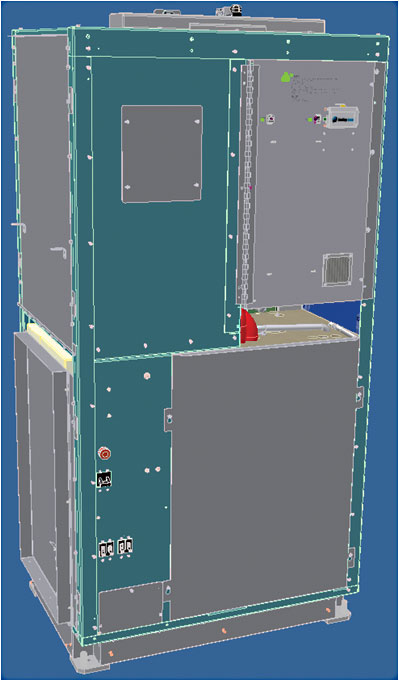
Represented here is the structural frame of the CE5 Alpha in Inventor. The embedded model includes all hardware, subsystems and mass.
But the design challenges involved in creating a small fuel cell, affordable for home use, are daunting. Three core components, modules that slide in for ease of installation and maintenance, must be designed.
Fuel Processor converts natural gas into ultra-clean hydrogen through a catalytic process, as opposed to burning, reducing CO2 emissions.
Fuel Cell Stack processes the hydrogen to create direct current (dc) power, usable heat, and water.
Power Conditioning Unit then converts the dc electricity into alternating current (ac), which then ties directly to the main electrical panel, providing steady continuous power.
Though fuel cells were invented a century ago, their first practical applications were in US spacecraft, including the Space Shuttle. (We’re told that Shuttle astronauts don’t bring water aboard the craft; all the water they need is generated by the fuel cell.) So fuel cell technology is well proven, and the real challenge is creating models affordable and rugged enough for down-to-earth uses.
Enter ClearEdge Power. Originally established in 2003 to provide fuel cells for backup power, ClearEdge’s expertise is centered in knowledge of fuel cells, fuel processing, and systems integration. Their design goal was to produce a 5 KW fuel cell system, running on natural gas, to provide electrical energy. Waste heat, a byproduct of electrical generation, could be used for heating. An average house using such a fuel cell would reduce its carbon loading by up to 13 tons of CO2 each year. And in areas where purchased electricity is costly, as in California, power from a fuel cell would be less expensive, allowing a typical payback period of three to five years.
Cost of the 5 KW fuel cell from ClearEdge, the CE-5, is offset in part by federal and state (in CA) tax credits totaling $17,500.
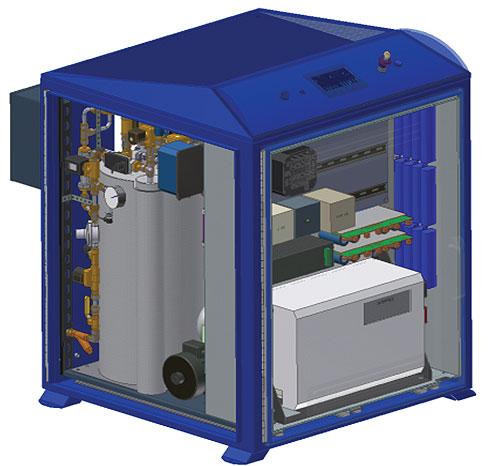
This was the first conceptual design for CE5 Alpha, done in April 2007. The Alpha program was a proof-of-concept for the ultimate CE5 design. The packaging of the Alpha unit was done based on an available enclosure box, and no other major subsystem hardware was procured or assembled.
ClearEdge Power engineers use Autodesk Inventor for all of their design work, from production tools and product components to assembling complete, integrated fuel cell systems. By doing all design work digitally, the company’s engineers can visualize and simulate the real-world performance of every aspect of the design, from pipes and plumbing to package design. They have eight CAD seats and also use Ansys for structural and thermal analysis, ProductStream for change management, and Inventor Vault to manage their database.
“When we started looking for a CAD system, we wanted something that was low in cost and very easy to learn,” explained Zakiul Kabir, senior VP of Engineering and Product Development at ClearEdge. “We were hiring people from different backgrounds, used to different tools. And when they came to ClearEdge, we wanted them to be able to quickly pick up our tool of choice. (Now) they can take an idea, develop a design, create a digital prototype, and analyze performance—without ever leaving their computers. We can go from concept to actual product without spending a dime on sheet metal for physical prototypes.”
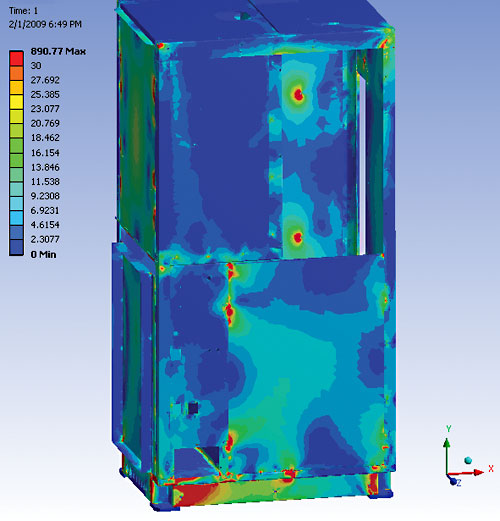
The structural model of the CE5 is transported from Inventor to ANSYS to perform static and dynamic stress analysis. Dynamic stress analysis is important to ensure seismic requirements and loads during shipping and handling. The high-stress points, as depicted by red zones, were subsequently analyzed in details to ensure structural integrity for a robust design.
One of the major CAD applications at ClearEdge is packaging, Kabir explains. “In a residential system, packaging is an enormous challenge, because we don’t have too much space, but need to design a compact system that can be shipped and handled easily. We need to make sure all the safety features are in place, and that’s a significant design and packaging challenge.
“We use a black box approach. We take all the shapes we have to include, and look at placing them in one big box. Then when the whole thing looks like a reasonable packaging concept, we can develop the detail design. At that point, we use another package to do all the FEA, the structural analysis and the thermal analysis. That way, we can be sure that our design will survive the structural loads and will have all the thermal properties it must have. We do all of this analytically before we develop any hardware. That capability is an enormous benefit for a small company like ours, and we can do it very effectively and cost-efficiently,” Kabir continues.
He describes one instance when digital prototyping avoided a costly mistake. “We had an alpha program where the shape of the product was significantly different from what we wanted the unit to look like. The product was much larger in footprint and shorter in size, which created a problem in shipping and installing it. We needed to redesign the system without redesigning each of the subsystems that had been designed, tested and verified. We needed to make sure that that they would fit into a new enclosure. When we started to do that, we found interferences and situations where the parts needed to be changed in size and shape. So we were able to use the capabilities of the CAD system to shrink the parts, re-orient them and verify them to make sure everything worked as intended,” he concluded.
ClearEdge Power
www.clearedgepower.com
Autodesk Inc.
www.usa.autodesk.com/company/digitalprototyping
Filed Under: Software • 3D CAD, Digital manufacturing, Green engineering • renewable energy • sustainability, ENGINEERING SOFTWARE

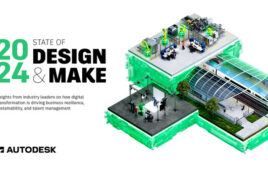
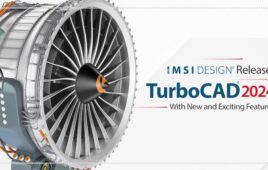
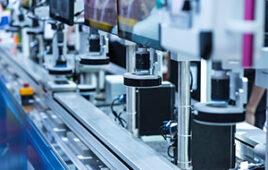

Tell Us What You Think!